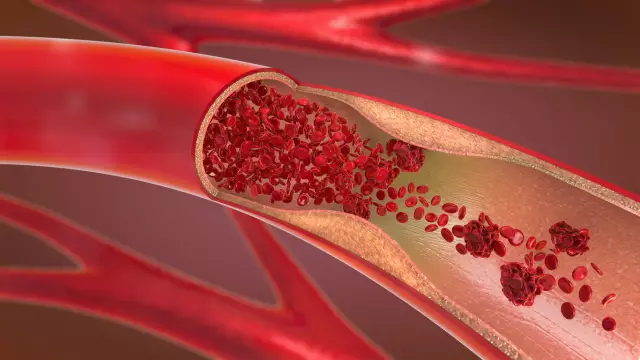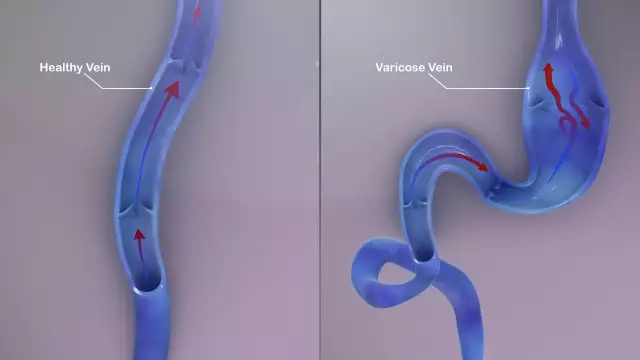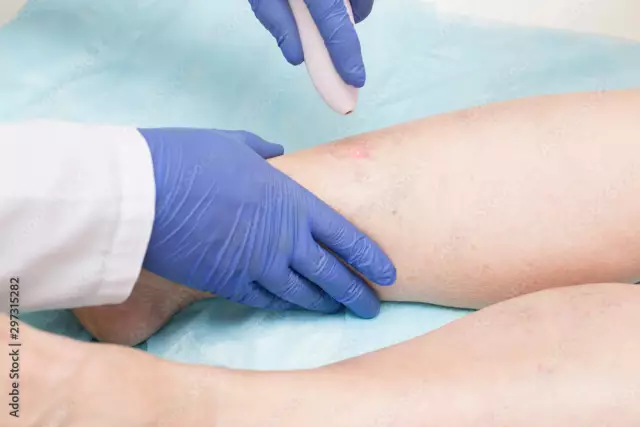- Author Rachel Wainwright [email protected].
- Public 2023-12-15 07:39.
- Last modified 2025-11-02 20:14.
Veins
General characteristics of veins
Veins are blood vessels that transport blood from the capillaries towards the heart. All veins form the venous system. The color of the veins depends on the blood. Blood is usually depleted in oxygen, contains decay products and is dark red in color.

Vein structure
By their structure, the veins are quite close to the arteries, however, with their own characteristics, for example, low pressure and low blood flow rate. These features give some features to the walls of the veins. Compared to arteries, veins are large in diameter, with a thin inner wall and a well-defined outer wall. Due to its structure, the venous system contains about 70% of the total blood volume.
Veins located below the level of the heart, such as the veins in the legs, have two systems of veins - superficial and deep. Veins below the level of the heart, for example, veins in the arms have valves on the inner surface that open with the flow of blood. When the vein fills with blood, the valve closes, making it impossible for blood to flow back. The most developed valve apparatus in veins with strong development, for example, the veins of the lower body.
Superficial veins are located just below the surface of the skin. Deep veins are located along the muscles and provide the outflow of about 85% of venous blood from the lower extremities. Deep veins that connect with superficial ones are called communicating.
Merging with each other, the veins form large venous trunks that flow into the heart. Veins are interconnected in large numbers and form venous plexuses.
Function of veins
The main function of the veins is to ensure the outflow of blood saturated with carbon dioxide and decay products. In addition, various hormones from the endocrine glands and nutrients from the gastrointestinal tract enter the bloodstream through the veins. Veins regulate general and local blood circulation.
The process of blood circulation through the veins and through the arteries varies greatly. Blood enters the arteries under the pressure of the heart during its contraction (about 120 mm Hg), while in the veins the pressure is only 10 mm Hg. Art.
It is also worth noting that the movement of blood through the veins occurs against the force of gravity, in this regard, the venous blood experiences the force of hydrostatic pressure. Sometimes, when the valves are malfunctioning, the force of gravity is so great that it interferes with normal blood flow. In this case, the blood stagnates in the vessels and deforms them. Then the veins are called varicose veins. Varicose veins have a swollen appearance, which is justified by the name of the disease (from Lat. Varix, genus varicis - "swelling"). The treatments for varicose veins today are very extensive, from folk advice to sleep with the feet above the level of the heart to surgery and vein removal.
Another disease is vein thrombosis. With thrombosis, blood clots (thrombi) form in the veins. This is a very dangerous disease because blood clots, breaking off, can move through the circulatory system to the vessels of the lung. If the clot is large enough, it can be fatal if it enters the lungs.
Found a mistake in the text? Select it and press Ctrl + Enter.






